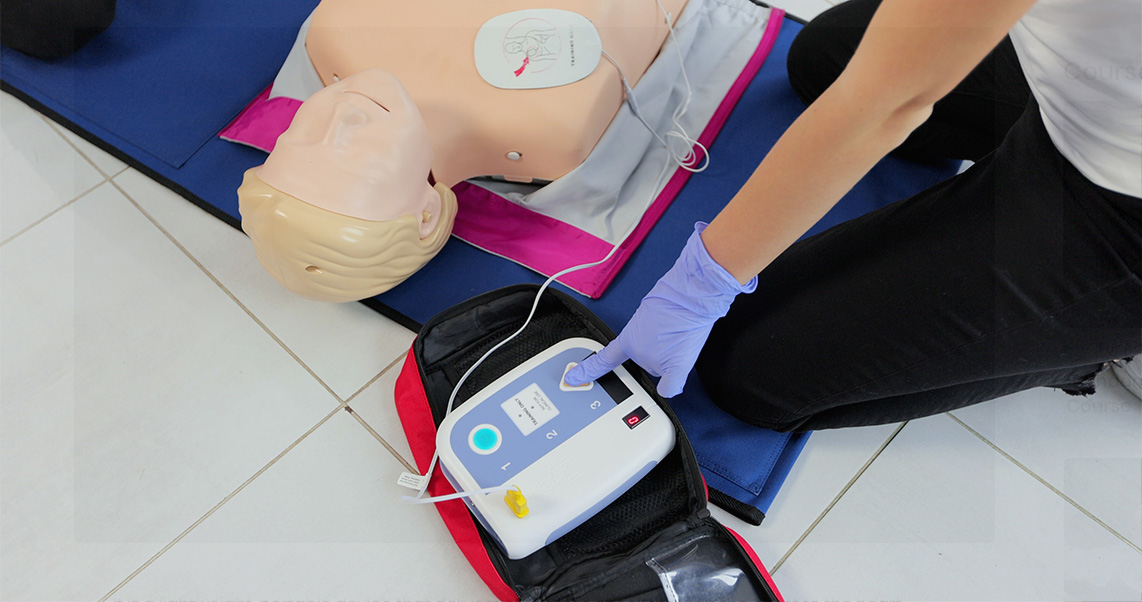In life-threatening moments, Automated External Defibrillators (AED) are often the only chance of survival. Through their ability to detect and urgently respond to cardiac arrhythmias, AEDs serve as a beacon of hope in such dire times. It is essential we recognize the gravity of this life saving device and find ways to ensure its presence in public spaces.
What is an AED Defibrillator?
An AED defibrillator is a portable electronic device used to diagnose and treat life-threatening cardiac arrhythmias, specifically ventricular fibrillation (VF) and pulseless ventricular tachycardia (VT). These irregular heart rhythms can lead to sudden cardiac arrest (SCA), a condition where the heart stops functioning correctly, depriving the body of oxygen. AED defibrillators work by delivering an electric shock to the heart, aiming to restore its normal rhythm.
Immediate Response to Cardiac Arrest
Every second matters in reviving those with cardiac arrest. Studies demonstrate that for every 60 seconds gone, the chance of survival diminishes by ten percent. That means if there’s no action taken, the consequences can be dire; brain damage or death are dangers all too real. But having an Automated External Defibrillator (AED) near at hand could make all the difference, bridging the gap until a medical response arrives.
The Wide Application of AED Defibrillators
AED defibrillators are indispensable devices that can be found in various settings. Let’s explore some of the places where these devices play a vital role:
1. Public Spaces:
Public spaces such as airports, shopping malls, stadiums, and train stations witness high footfall, making them susceptible to medical emergencies. Having AED defibrillators strategically placed in these areas empowers bystanders to initiate life-saving measures promptly. With clear instructions and user-friendly interfaces, AED defibrillators can be operated effectively by individuals with little to no medical training.
2. Educational Institutions:
Schools, colleges, and universities are environments where large numbers of students and faculty members spend a significant portion of their day. Sudden cardiac arrest can occur irrespective of age, making it vital to have AED defibrillators on campus. Quick access to these devices can significantly increase the chances of survival for students, teachers, and staff members in case of a cardiac emergency.
3. Workplace Safety:
Workplace safety is paramount, and employers must take preventative measures to ensure the health of their employees. Defibrillators are a crucial component of workplace safety measures as they can be life-saving in the case of unexpected cardiac arrest. To ensure everyone’s well-being, it’s important to carefully train and familiarize personnel with the location and use of these devices. Investing in proper safety protocols creates a secure workplace for all.
4. Community and Residential Areas:
Residents and community members are the cornerstones of any district. By equipping shared spaces like residential areas and community centers with life-saving AED defibrillators, neighbors can take positive steps to care for one another in times of crisis. With adequate knowledge and instruction, the collective becomes more capable and prepared, raising the chances of survival for those experiencing cardiac arrest.
Advantages of AED Defibrillators
Here are advantages of AED (Automated External Defibrillator) defibrillators:
● Rapid Response in Cardiac Emergencies:
AED defibrillators are designed for quick and straightforward use, even by individuals without medical training. When someone experiences sudden cardiac arrest, immediate intervention is crucial. AEDs enable bystanders to respond promptly, delivering life-saving shocks to restore the heart’s normal rhythm.
● User-Friendly Design:
AEDs come with clear visual and audio instructions, guiding users step-by-step through the resuscitation process. These devices are intentionally user-friendly to ensure that anyone can use them effectively during high-stress situations. The simple interface reduces the risk of errors and boosts confidence in providing aid.
● Increased Chances of Survival:
Unveiling the stark reality of sudden cardiac arrest, scientific studies demonstrate early defibrillation dramatically increases the chance of survival. A ten percent reduction in the likelihood of rescue occurs with every passing minute when assistance is not provided. To attenuate this grave threat to life, Automated External Defibrillators (AEDs) have been widely distributed across institutions, public spaces, and workplaces, promising increased prospects of survival.
● Portability and Accessibility:
AED defibrillators are compact and lightweight, making them easy to carry and place in various settings. They are commonly found in easily accessible locations, such as wall-mounted cabinets or prominent areas within buildings. Their presence in key locations ensures that life-saving assistance is just moments away during emergencies.
● Safety Features and Automated Analysis:
AED defibrillators are equipped with safety features to protect both the victim and the responder. They analyze the victim’s heart rhythm to determine if a shock is required. The device will only administer a shock if it detects a shockable rhythm, ensuring that inappropriate or unnecessary shocks are avoided.
● Versatility and Adaptability:
AED defibrillators can be used on individuals of different ages and sizes. Many devices have pediatric pads or settings that allow for the adjustment of shock levels to suit children. This versatility makes AEDs suitable for various populations, making them indispensable in public spaces where diverse groups of people gather.
The life-saving properties of AED defibrillators are indisputable. Their quick response capabilities, intuitive design, and capacity to increase the odds of survival, make them an indispensable asset in a variety of contexts. Investing in this technology and creating awareness about its usage can help create secure environments and enable individuals to take quick action during medical emergencies. In conclusion, remember that time is of the essence during a cardiac emergency, so if you have been searching for AED, you can find aed defibrillator here, ensuring that life-saving assistance is just moments away when it matters most.













